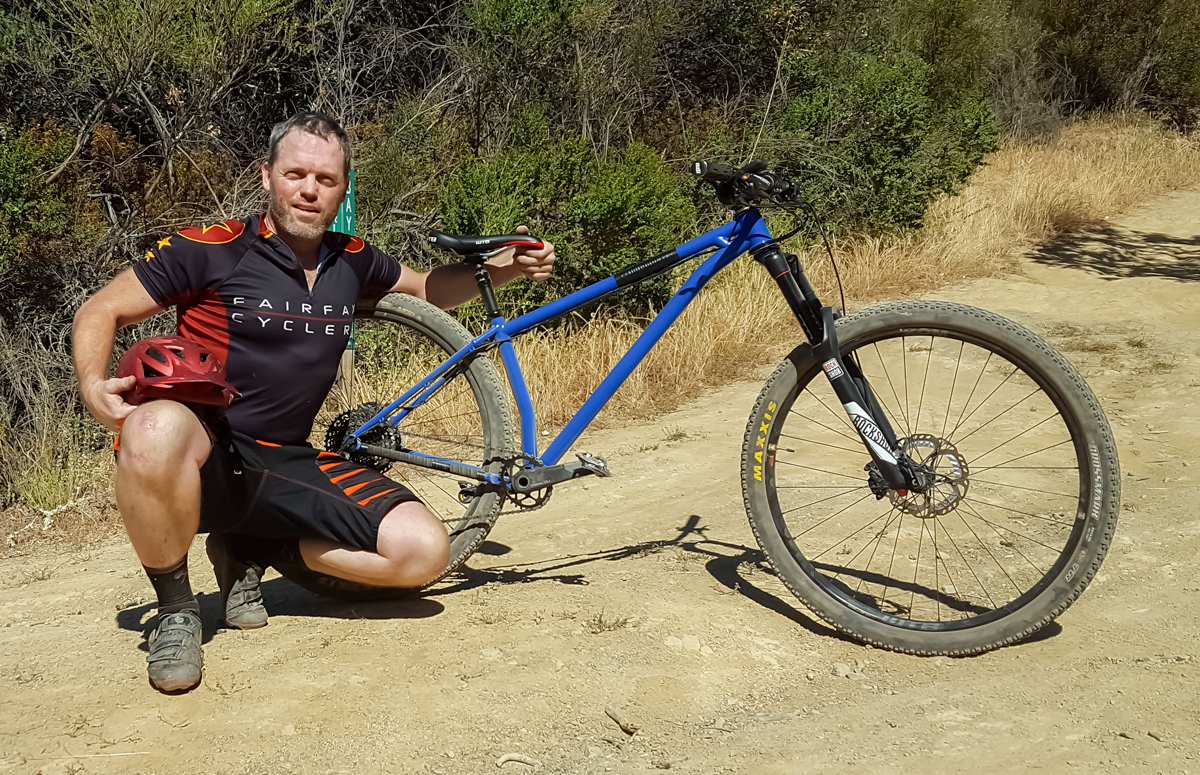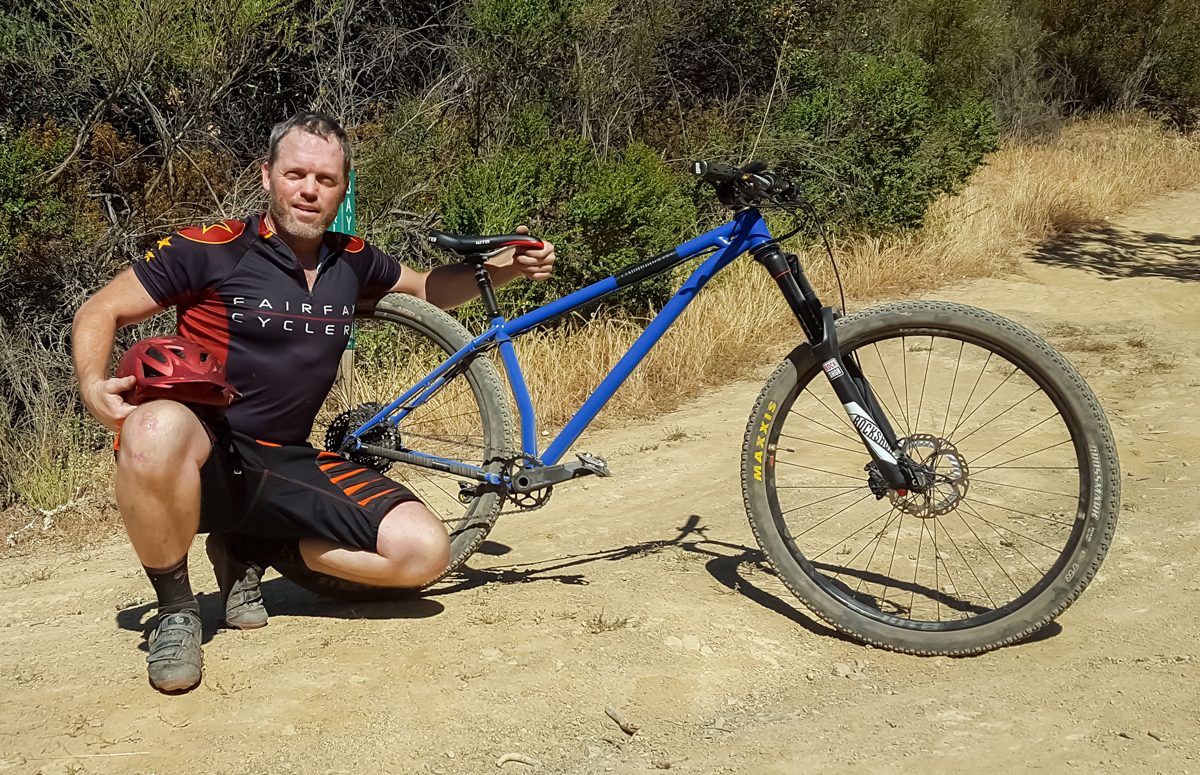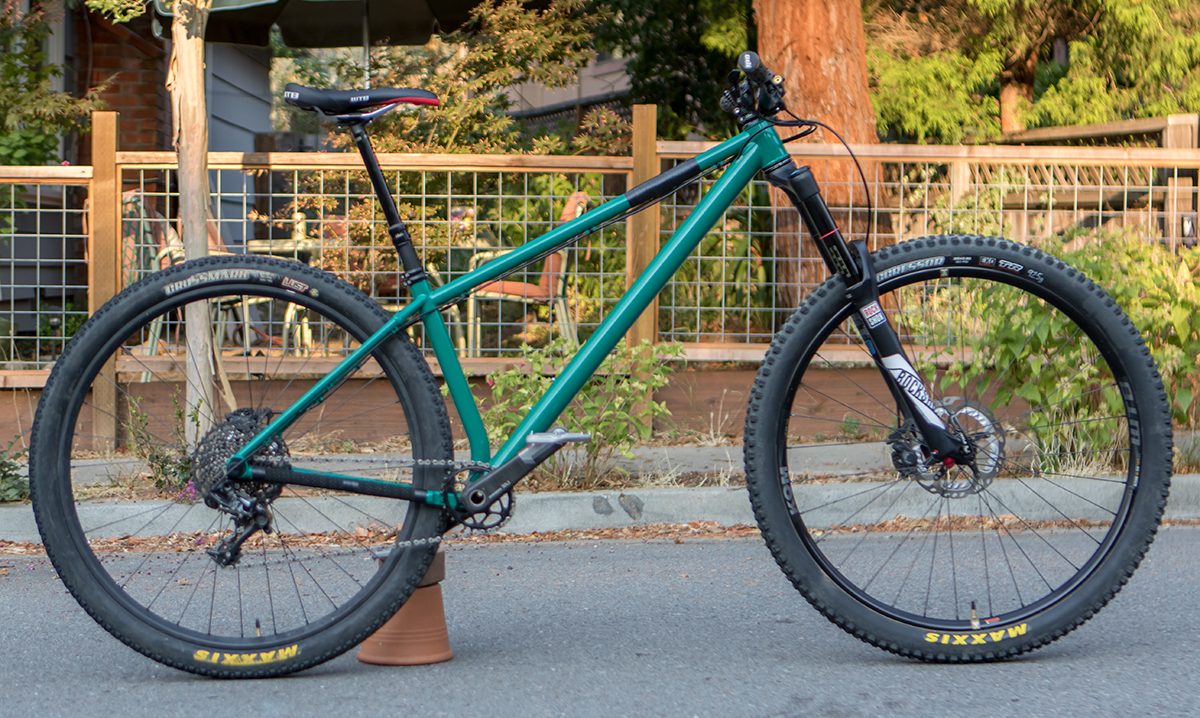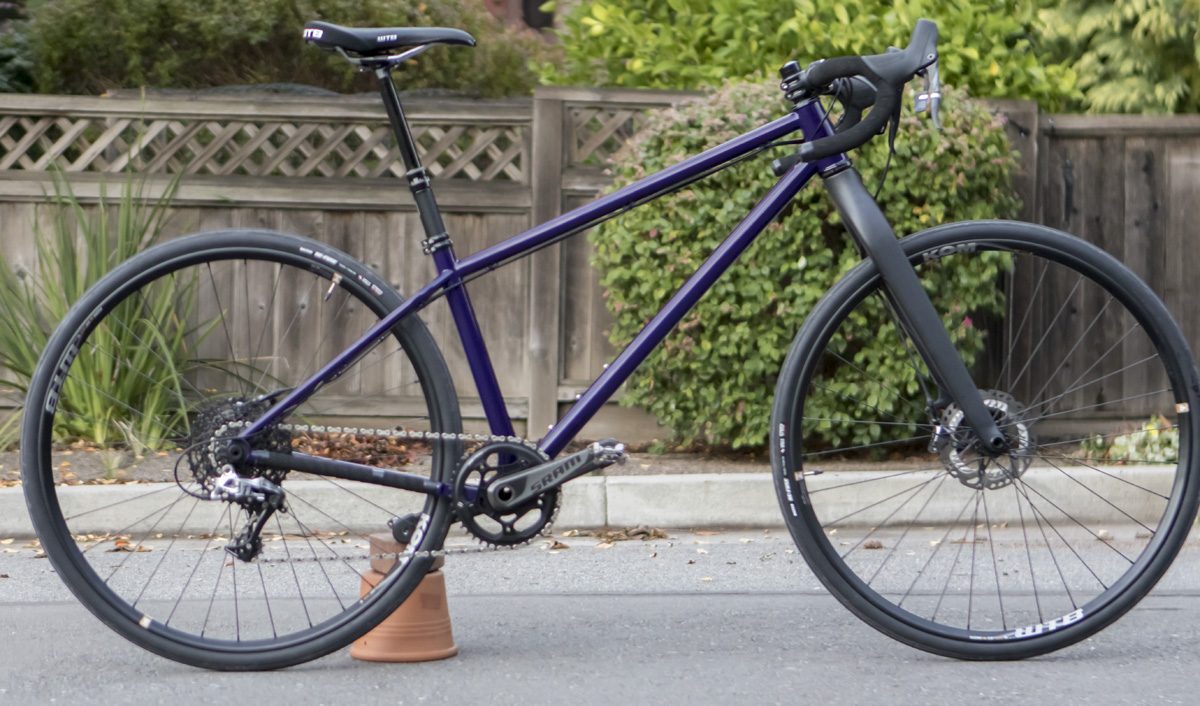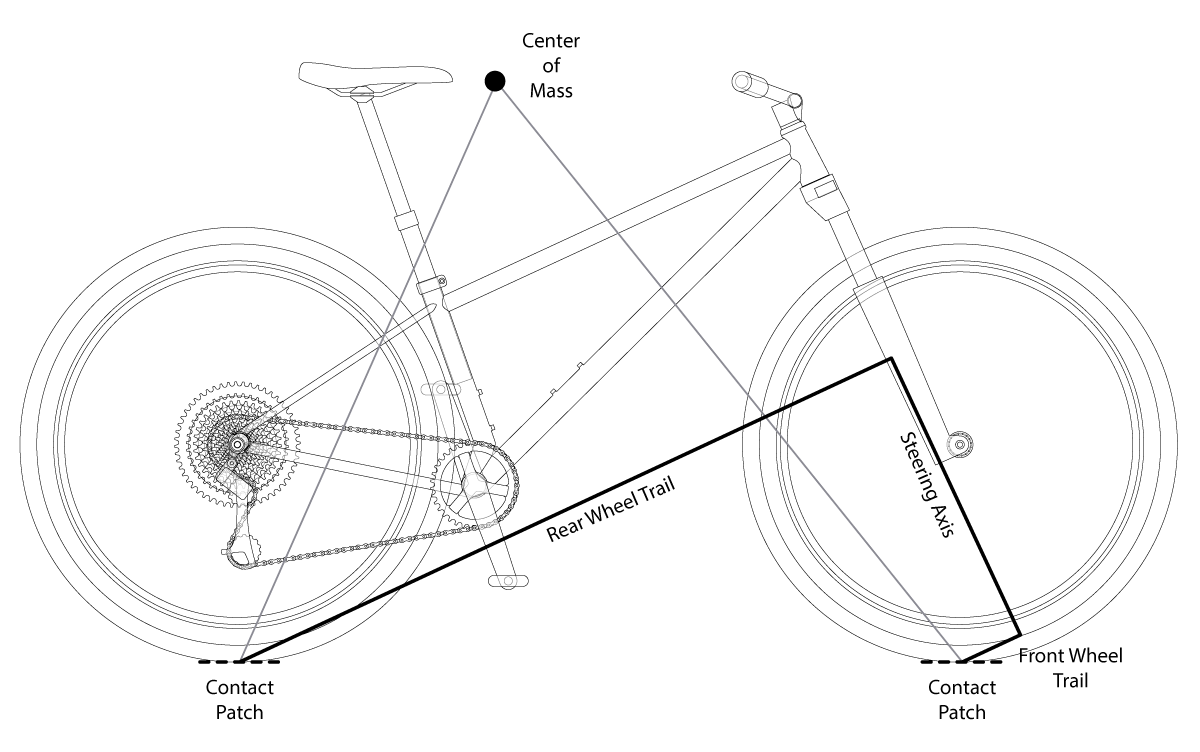I didn’t come up with the idea of Forward Geometry. Sure, I’d been working on improving how my bikes worked and getting them to a modern state for a while. Still, other folks have led this particular charge.
Quite a few people have been working on moving this concept forward. The two people in the current era (2017) that folks may recognize would be Cesar Rojo and Chris Porter. I’m sure if I had a long talk with them, I’d find that they had got it from someone else, and those folks got it from someone before them. Certainly, the path would cross by Gary Fisher and the Genesis Geometry (G1) of 1999. If we talked to Gary, it would, surely, have come from someone before him. Bicycles have been around for 150 years and some of the greatest minds the world has known have looked at the problems. Good solutions often get ignored through history for a variety of reasons. Appearing again at a better time when they can be exploited better or when the market was ready.
This isn’t a revolutionary development in the design of a bicycle. It’s evolutionary. Mountain bikes had been evolving and changing as we broke from what we thought we knew into what really works or just works better. In the early days of mountain bike development, bike designs were informed by road bikes and their shape reflected that. Then, mountain bikes were essentially road bikes with fat tires and flat handlebars. Today, we’ve arrived at a true dirt bike, after 30+ years of racing and engineering, data collection and competition. Still, we need to continue to move past what we think we know to get to someplace better. In 10 years, things will look different but we have made a lot of progress for the right reasons most recently.
I’ve been in and around the bicycle industry since the early nineties. I’ve seen a lot of changes and my perspective is that of someone that can choose his own frame geometry rather than rely on production machines. Once I began designing and building my own frames, I had to figure out what the issues were that I didn’t understand. It’s easy to just do what you think you know but to move forward you have to break that down and challenge your beliefs. What is true and honest? Is this fact or hearsay? I had to go through that. Many people think bike design is easy, it’s not. My first bikes were average. The typical assumptions like others. Over time, they changed.
Riding downhill, enduro, and hardtail and even road bikes gave me more perspective as I would be chairlifting DH bikes at Northstar on Saturday, trail riding hardtails in Marin on Sunday, and commuting to work in San Francisco on a road bike on Monday. As I kept asking myself about the differences that I noticed, what I thought I knew became fuzzy. What made my downhill bike different than my road bike? I’d go to a fitter to get sorted and find out how little they really knew or understood. What was once light was now dark. I started trying new things. I also talked to local fast guys about what was working for their racing. What were the local enduro pros using and why? What about downhill and XC racers? I knew what I was doing but what were they doing? One problem that I see most custom framebuilders getting into is that they don’t get out and ride a very diverse selection of bikes or bikes built by others. They get stuck in the past and don’t know what’s relevant. Lesson – ride different shit.
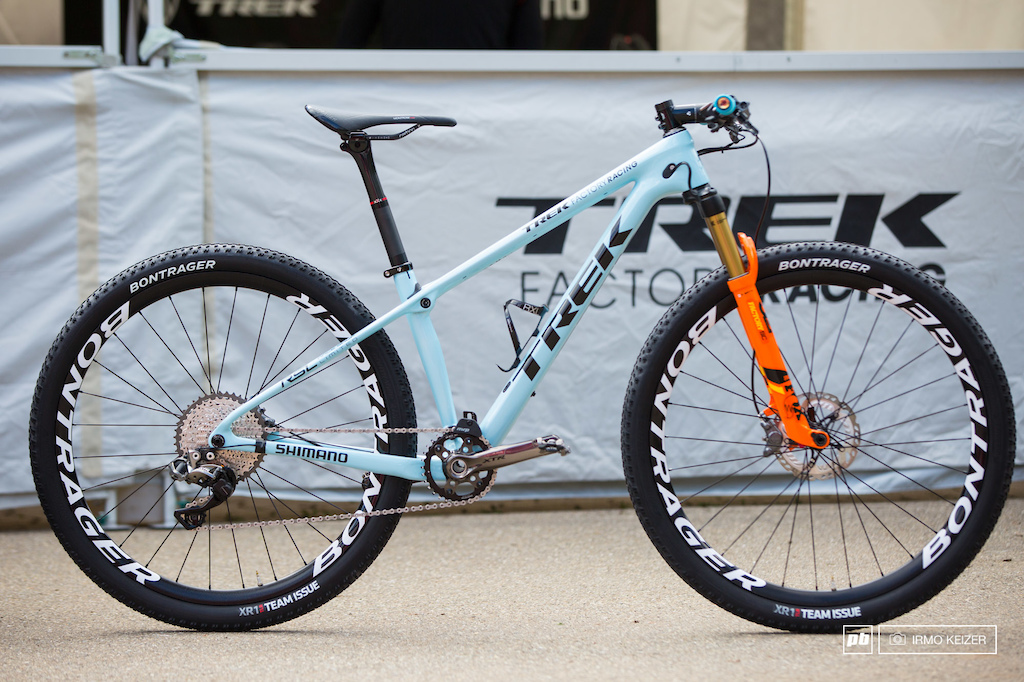
The above image is a good reflection of what is happening in top level riding. Because of Emily Batty’s small stature, problems with current bike design are magnified and make for a great demonstration. The size of her frame has been chosen so that she can get her hands into the right place at the grips, but her saddle is highly compromised forward and her front wheel is simply in the wrong position, tucked close to her center of mass. Why does Trek continue to make and sell bikes the don’t even work for their top riders? Easy, the mentality of bike shops won’t allow for a bike built correctly. 14 year old boys in bike shops are selling bikes think they know what they are talking about and Trek caters to that to get their product sold. Worse, in many XC racing applications, it’s a roadie for who the bike has to appeal for sales. In top level racing, the racers are purely promotion rather than product development. Racing exists to sell bikes, not the other way around.
Here is another example of change. A bike I made in 2009, the Warbird. It was crazy long at the time. A 26″ single speed bike but very progressive for the time. I was just starting to really figure things out. Compare it to the 2017 klunker, the Red Baron. It’s obvious the direction that the radical changes have gone. The Baron isn’t even as long or aggressive as the 2016 Concorde trailbike. So much has changed in the last 9 years.
I’ve read about Porter’s work with Nicolai and the Geometron. It was interesting but there was something off about it. Porter isn’t a frame designer or builder, he’s a suspension tuner so he is limited in what he can experiment with or the tools he has for testing. His bike was poorly designed for going up hills and traversing more level sections. It was singularly for going down hill. Still, as I bought, built, or modified my bikes, I found everything needing to move forward similarly. I took a lot of crap from folks that saw long stems on my bikes thinking I was some bozo but what they didn’t notice the Angleset and where the front wheel was in relation to the grips or the saddle placement. I was putting bikes together based on measurements and each successive bike gave me more room to work. Folks saw a long stem. I saw a front wheel tilted forward hard with an Angleset making the bike longer in the front. The numbers weren’t lying.
Then came Red Five. It had been a few years since I had built a proper trail frame and a lot had changed. I had intended to build a new frame several times during the era ahead of it. I had a bunch of personal problems that kept me from digging deep enough to do the hard work one of my bike requires. Also, each time I’d get a bike started, my views of frame design would have changed and I was no longer interested in completing the bike. This happened at least 3 times. Seriously. Things were changing very fast in those years. So, I finally get motivated. I’ve got a great girl on my side. I’m shredding bikes with someone that keeps it interesting. I’m also tired of riding the dinosaur hardtails in my quiver. Sadly, it was again seeing the lame uninformed mountain bikes shown at NAHBS that caused my rage to boil over. I get some yokes cut. I bend some tube. I push my design hard.
Riding Red Five was amazing. It opened my eyes. A 165mm fork on a hardtail, a longer front end and a tucked rear wheel. It was really good. Once the initial riding was out of the way, I was refining and changing it. It was obvious, I thought that I had gone pretty far with the design but in reality I hadn’t gone far enough at all. That was great! I thought I was pushing the limit but instead I was just scratching the surface. I tried a lot of configurations with that bike, like it was a factory mule. I wanted the next bike to be right.
Pink Five, my wife’s new bike needed to come before my new bike and gave me the opportunity to refine my concepts on a bike that another rider would use in a different way. It was for a smaller lighter person that wasn’t going to ride as fast or as aggressive. This was good as I learned more about what stayed the same, what changed, and why. I also produced head and seat tubes that would refined the process and the product.
The Concorde lands! This is the bike I’m talking about. This is the epitome (as of now) of what I see a forward geometry trailbike is. It goes up hills fast. It goes downhill really fast. It is simply mind blowing what the bike is capable of. Compared to Porter’s work, it isn’t simply a “down the hill” bike, it’s far more rounded. It does big drops, it smashes rocks, I can outrun all but top expert enduro riders using squish bikes. It just eats up what it’s thrown at. It also crushes the climbs.
It doesn’t end there. I’ve furthered the concept with the F-35 Lightning. This bike is about the compromises that the drop bar adds to the design but that forward geometry is just as applicable to the drop bar as it is to flat bar.
The latest iteration on this concept and very highly developed, PVD SR71 Blackbird. a 180mm fork and 185mm seat dropper. A near perfect tune for Marin and Bay Area riding.
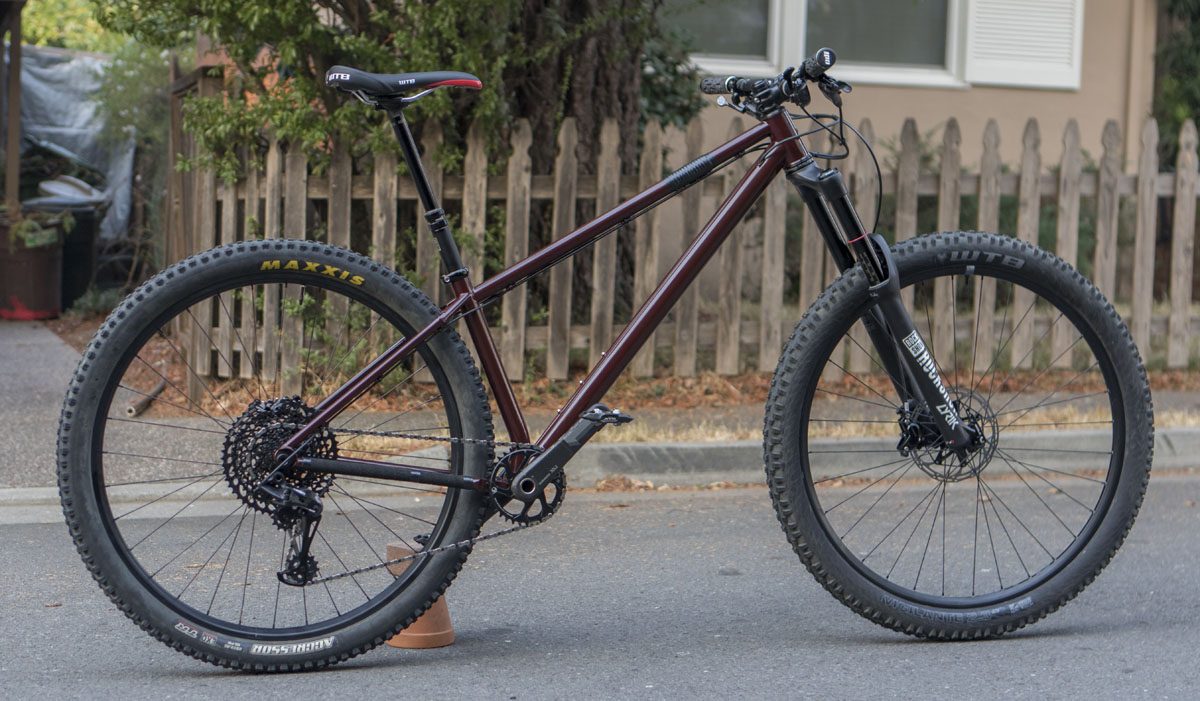
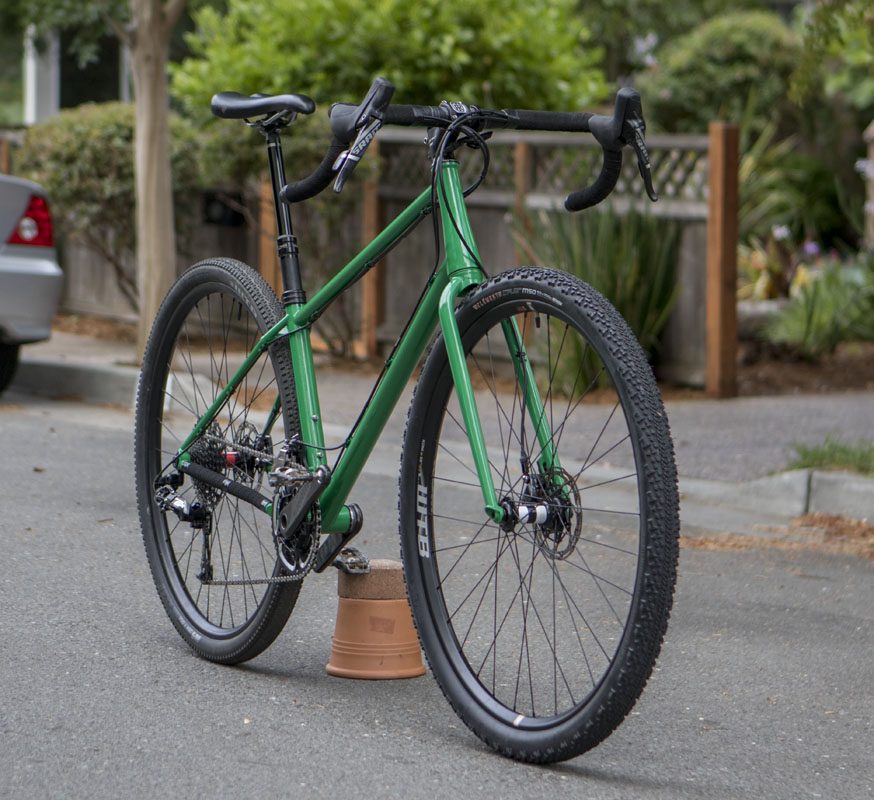
So, you’ve been asking…what the hell is Forward Geometry?
This is my vision of forward geometry after putting considerable time into the subject.
The bike interacts with the ground by way of the tires. The center of mass (COM) of the system determines how forces are distributed onto the tires in various conditions. Placement of the rider on the bike generally defines the COM location (eBikes change this slightly). The rider interacts with the bike by way of the pedals, hand grips, and, sometimes, the saddle.
In the past, the rider has been placed too far rearward on the bike so as to be able to move around the saddle as well as traditional grand tour positioning. A bike designed mainly for sitting than ‘riding’. The handlebars were toward the rear of the bike to let the rider move around the high saddle. This worked to keep the front wheel dangerously close to the crank axis.
With the arrival of dropper seatposts, it all changed, we can move to a more forward saddle for optimal placement of the bars and wheel. The use of this design strategy is informed by and depends on the use of a dropper seatpost and it’s ability to move out of the way. Without that, it doesn’t work. As no modern offroad bike is used without a dropper seatpost, this is fine. Even aggressive urban applications require drop seats. 150mm droppers should be at least standard but 200+mm preferred. A post with 125mm of drop or less is a considerable problem. 100mm is almost useless. Any bike used on dirt must be spec’d with a dropper.
For a bike that is used in the dirt (MTB or Hybrid), we want the front wheel as far ahead of the rider, COM, as we can get (in general). The center of mass sits somewhere over and ahead of the bottom bracket. The further ahead the front wheel is from the COM, the less a sharp edge or quick bump will disrupt the COM as the front wheel goes over it. The angle of attack is much lower so the chances of going over the bars is also much lower. This means that the bike rolls over the ground instead of getting interrupted by it. This translates into less loss of speed and control and safety. The rear wheel matters little from this perspective.
The placement of the rider on the bike defines the shape that the bike can take. Rider fit upon the bike is dictated by the arm strength and arm endurance of the rider. A bike that will be raced for two hours will have hand grips far more forward and lower than a bike that will be ridden all day or predominately downhill. The more forward and low the grips, the better the bike will climb. Period. Moving the hand grips rearward will take weight off the arms when seated but will decrease climbing performance and shift weight rearward. The grips should be low so that out of the saddle pedaling ergonomics are optimized. The bars can move upward some from that depending on back pain or how aggressive the bike is going down the hill, but it won’t be very much. The change in front wheel placement allows a much more forward position for descending that on old designs.
Let’s assume that the hand grips are optimally placed ahead of the pedals so that the rider is able to climb hard and isn’t running out of arm or feeling too much back pain. As said earlier, we want the front wheel far ahead of the COM. The first thing we do is slide the steerer tube up against the handlebars. For extreme customs, a 35mm stem will do this. For a more open fit, a 50mm stem will do this. but that’s not all you can do. (further developments change this) For a mountain bike we can change the head angle a bit, 65 degrees is about as much head angle as I’ve found good before the setup gets really bad from a suspension and wheel flop point of view, and that assumes a stout fork. For hybrids, 67 may be more reasonable. For the Concorde I ended up with about 820mm of front center, the 2018 Warbird has 850mm of front center. For riding in the most challenging trails in Marin, that’s about the limit for length (with a 29er wheel) that doesn’t get me into too much trouble in the tight stuff. Overly slack head angles become a real problem due to fork sliders binding when used in normal terrain and should be reserved for super high speed bikes hitting rocks hard and downhill. Slack is a bad thing unless it’s applied correctly. Personally, I’d love to have a 67 degree head angle on my bike but I’m making a compromise there to get the wheel up front more. This whole ‘slack’ thing people talk about is totally uninformed. To get around this, future designs may require a backwards stem.
So, our hand grips are set, we place the seat. Most of us know what kind of cockpit works for us (how much we can stretch out) and we use that. Essentially, we want the arms at about 90 degrees from the torso when seated on the bike. Knees bend about 150 degrees at full extension. I’ve found that a real seat angle (since modern mountain bikes will have bent seat tubes, center of bb to center of seat rail clamp) of about 74 to 74.5 degrees is a good place to start with and steeper for more aggressive performance oriented bikes. Young racer types and stretch out more and hold more weight for longer. This steeper seat position also helps getting out of the saddle as we do a lot off-road. Full suspension bikes can go a little steeper than hardtails as they tend to slack out a few degrees while climbing but this will haunt the rider of flatter traverse sections.
The rear wheel of the bike will be close to the COM, but not too close. The rear wheel and the COM are coupled in a more constrained way than the front wheel. If the rear wheel moves too close to the COM, the bike will plow or wheelie when seated climbing. If it’s too far away, the front wheel becomes extremely hard to lift over obstacles and climbing traction suffers. The rear wheel should end up just as close as it can be to the COM while still allowing for comfortable stable seated climbing in most places. Rider testing is very important here as the rider’s height and weight will dramatically change the rear end. A short light rider can have a bike with a much closer relationship between the crank spindle and the rear contact patch than a taller heavier rider can have. Obviously, chain stay length should be changing through a size range from any manufacturer. Often, testing is required to get the chainstay length right (as previously mentioned) as I haven’d done a formal study on the locations of the mass to the wheels. Like I said, good climbing without plowing. 420-425mm of chainstay is pretty good. Getting shorter than that will probably turn into problems unless running a very steep seat angle or the rider is small. If you aren’t climbing on the bike, you don’t have to worry as much about going too short.
The bottom bracket of the bike should be as low as possible for maximum control climbing and descending. Pedal strikes will happen, sometimes often. What we don’t want is pedal strikes that are disruptive or to happen unexpectedly. If the bottom bracket is low, climbing and descending are faster and in more control. The bike will be stickier. If the bottom bracket is high, lifting the front wheel becomes easier.
What are the advantages?
A modern bike like this is ridden differently than old fashioned bikes. Jumping right on to one, it will feel very different, even strange. It takes some time to get used to. It will feel long as hell for the first ride. The steering may feel slow. You won’t get around the corner you thought you would. You may feel off balance. It may still strange on the 5th ride. Slowly, as you change how you work the bike and learn what to do, it will feel right. Remember, you are changing years of learned response. It will feel strange at first but once you try going backward, you’ll immediately ‘get it’. From then on, you wont go back. It’s awesome.
The action on the bike takes place out of the saddle with it dropped out of the way. Instead of having the handlebars high and back to allow the rider to negotiate getting their ass behind the saddle, the handlebars are low and forward and the riders ass floats above the saddle. The rider is standing on the pedals, like on a DH bike and bending knees like a jockey to smooth out the flow. With a 170mm dropper, not much matters about where the rear wheel is or what it’s doing.The bike will be solid and stable at speed.
Cornering confidence goes up as more weight can be put on the front wheel safely. Generally, the front wheel has a lot of traction with the shift in bias. This is a popular misconception about the longer bikes. You actually end up with more weight over the front wheels, not less.
Climbing! The advantages are instantly obvious; bio-mechanics that allow for real power to be delivered to the bike in a comfortable way. Seated, the front wheel has weight on it allowing it to track well but in a way that doesn’t turn into a disaster when hitting rock or root hard. The low, forward bars feel good normal to gravity when the bike is tilted up with the surface of the climb so it feels right. Out of the saddle climbing is an expression of pure power.
I like to describe the philosophy as riding a downhill bike in a cross country position.
What are the disadvantages?
A forward bike is going to feel worst riding on flat terrain. It’s going to feel like there is too much weight on the arms unless you are hammering hard full XC. That just goes with the territory and XC racers would be the ones to notice this the least. The good thing is, for most real mountain biking, you go up and you go down with not much in between. This isn’t a deal breaker and a bike can certainly be made that feels good on flat, taking some advantage of a wheel shift, it’s just that you won’t be getting the serious magic that happens elsewhere as a cost.
Very tight, very steep downhill switchbacks are an issue that I notice. I’m talking seriously steep, super tight, hairpin switchbacks. Not the casual or normal hard corner. I’m talking steep and tight, hang off the back of the bike steep. Anyway, this gives rise to the pro-enduro style of nose pivoting corners that you see a lot of in the movies. This is just a function of the length of the bike and how things need to get done. If you aren’t all gnar and this concerns you, don’t be concerned. It’s an issue for folks determined to go hard and they’ll find a way. If you couldn’t ride that section before, you probably still can’t ride it.
Jumping and liftoff. Being set forward, it’s not easier to lift off the ground. It takes a bit more work. Once in the air, you’re a bit forward. This isn’t the set-up for dirt jumpers or freestylers. This setup is for hauling ass and crushing rocks.
In the end, your arms are the biggest disadvantage to all this. If they were stronger.. if they could last longer…your bike would go faster.
Compromise!
Anyone that has put real work into setting up and designing bicycles knows that no change is made in a vacuum. We rob from Peter to pay Paul. Typically, if I make a change that improves climbing, I’m making descending harder. This is true. But this also assumes that we are somewhere near an optimal setup in the first place (many folks are not). In the past, we haven’t been optimum in any way. While we can theorize about this, what happens on the trail is what is important. When I was doing a lot of work with motorcycle suspension and chassis adjustment, a top tuner friend was telling me as I was taking about the great changes I was seeing that when we get really close to the right set-up, that’s when the small changes seem big. When we are out in space, even big changes mean little. I believe that using the Forward Geometry method gets us far closer to optimum that what had been done in the past where the changes we make result in real shifts in bias. A Forward Geometry bike built for XC racing is going to be different than one built for downhill, obviously. Both, however, will share some similarities and be very different from bikes of the past. Faster.
Some named companies are doing this…but not here.
You’ll notice that most of the action on this front is being done in Spain and Germany and often in Britain. The Americans are completely lost in time and focused on gimmicks. Even small framebuilders in the US are functionally ignorant of the subject. Sadly, it will take a few years for us to see this in common use. Even more with regard to hardtail 29ers.
Some brands: Kona, Transition, Mondraker, Unno, Whyte, Nicoli, Orange, Pipedream
Here’s a nice video that Steve Mathews created about a year and a half after this post went up.

